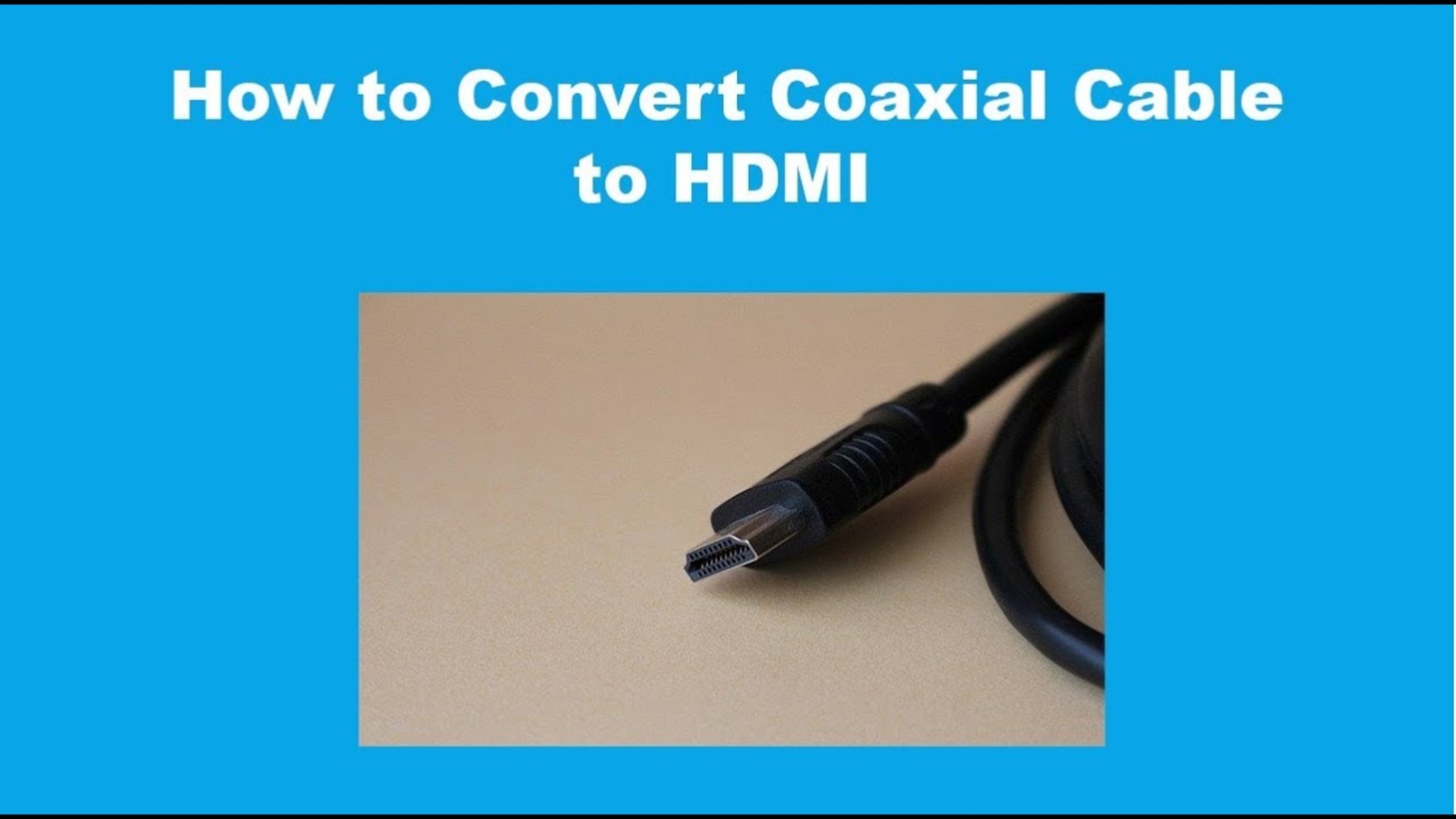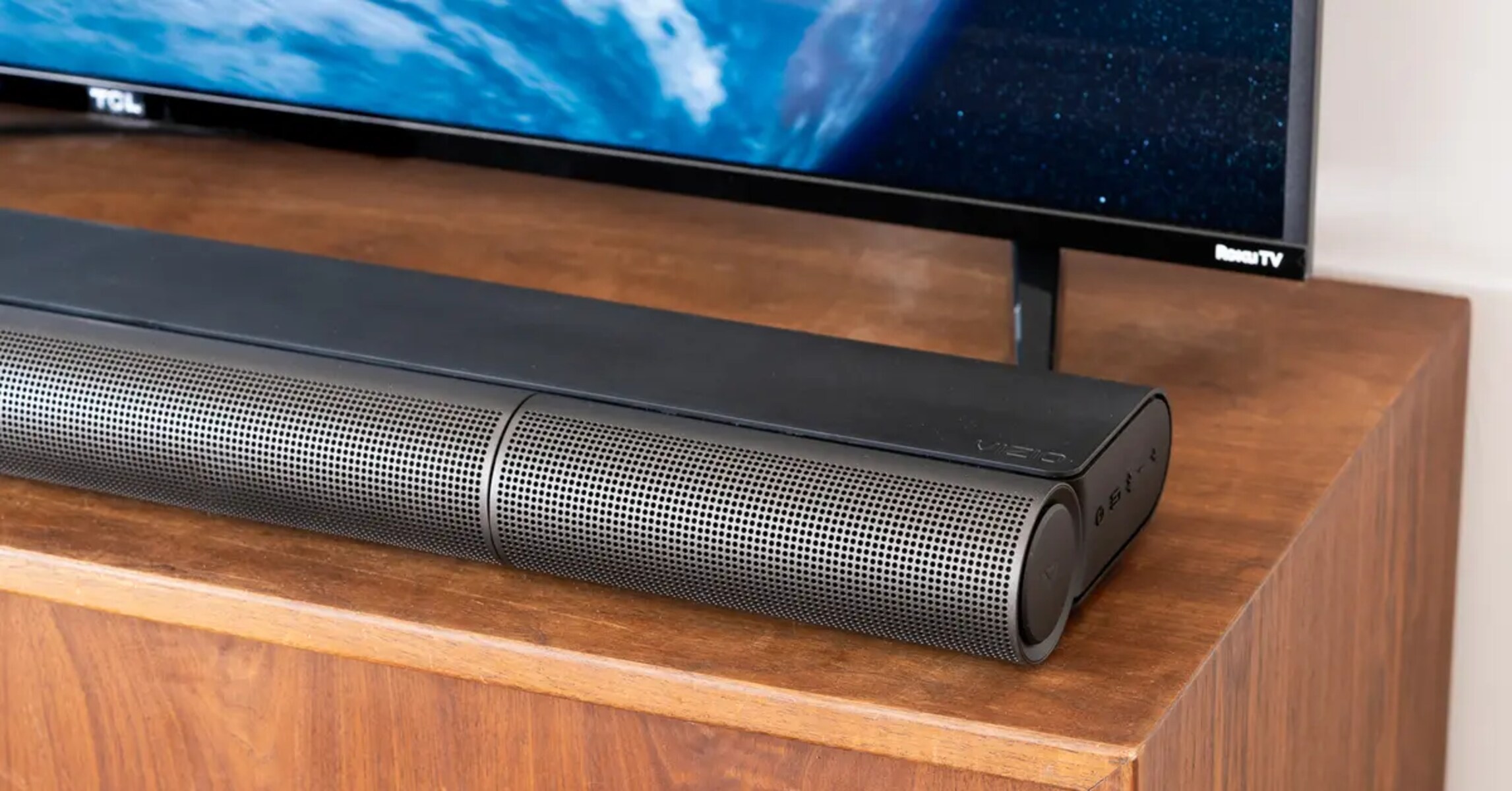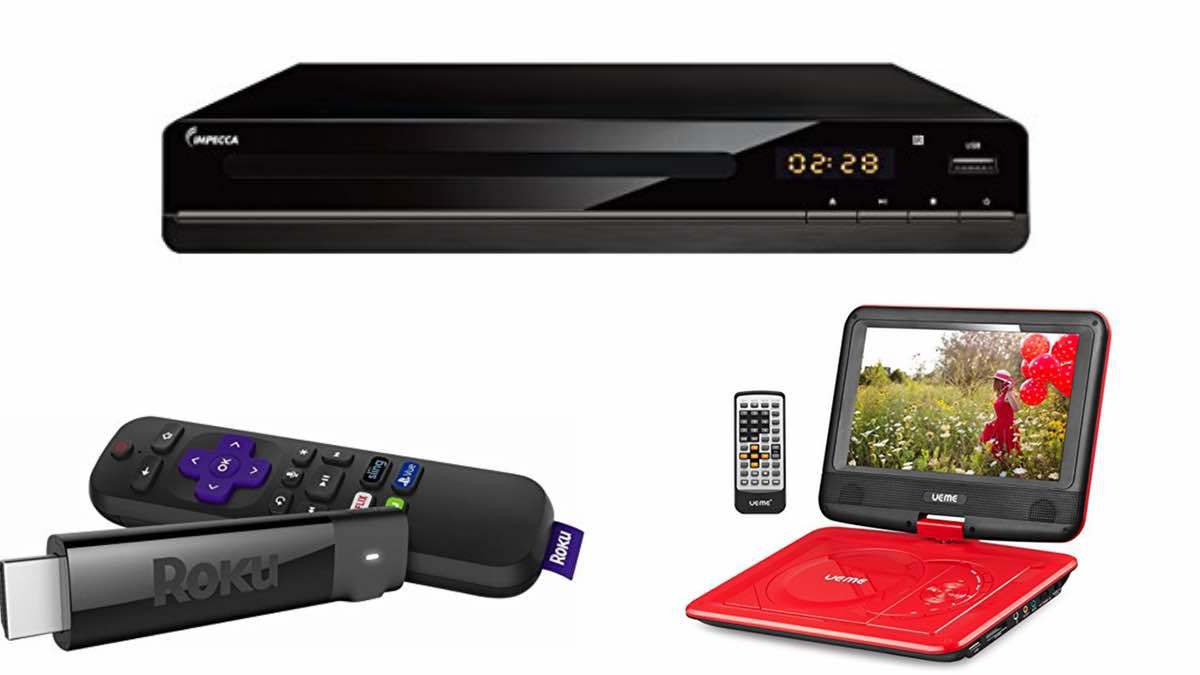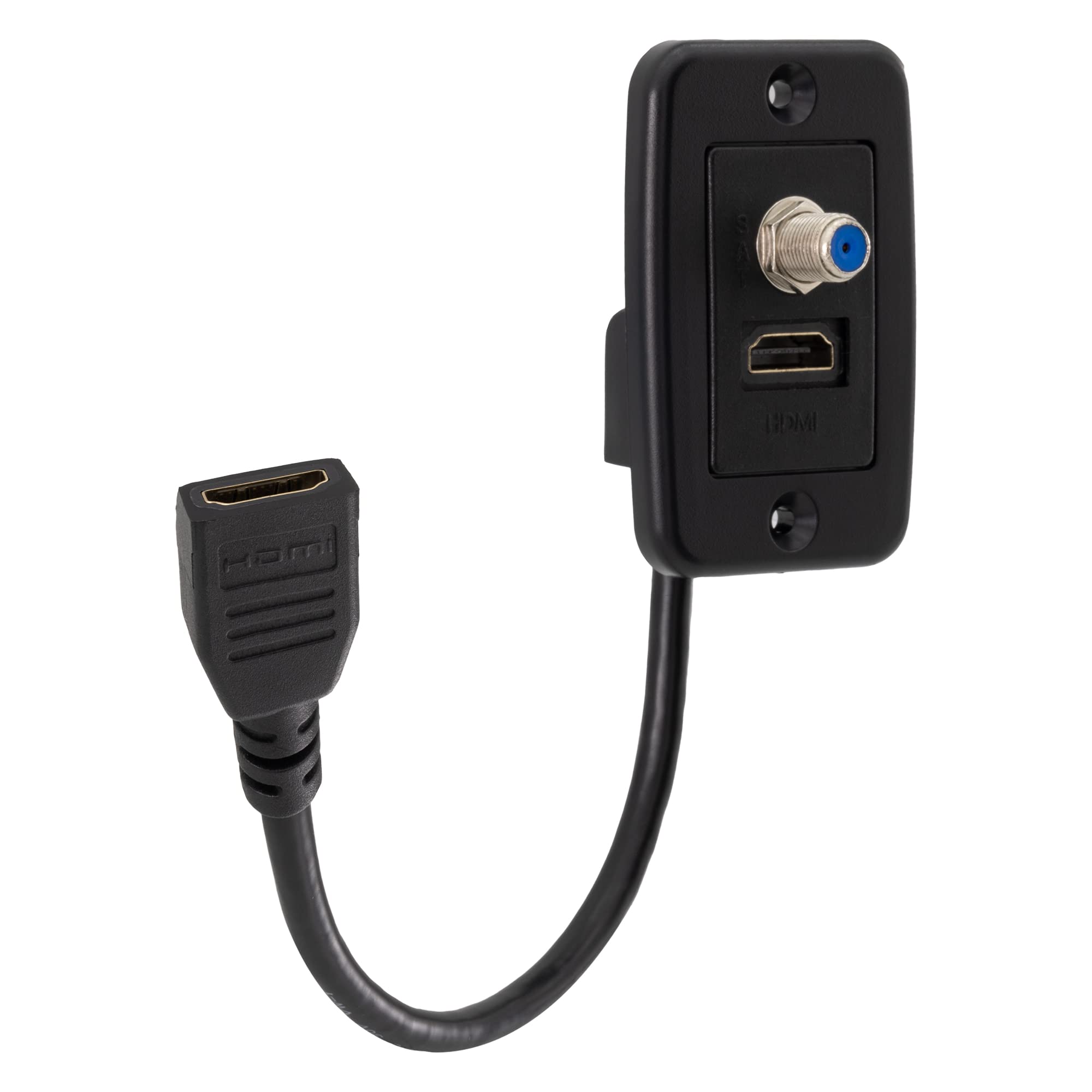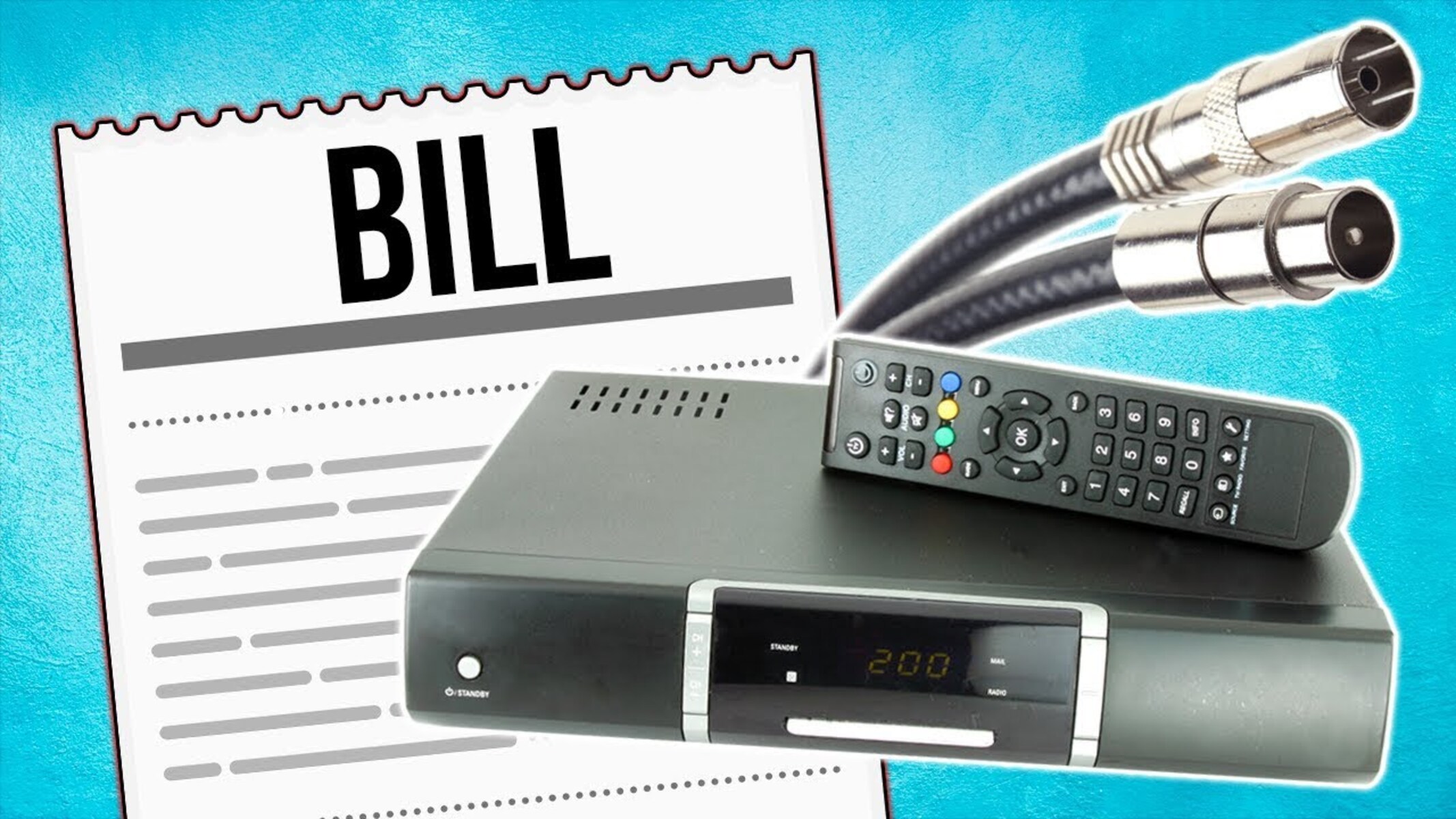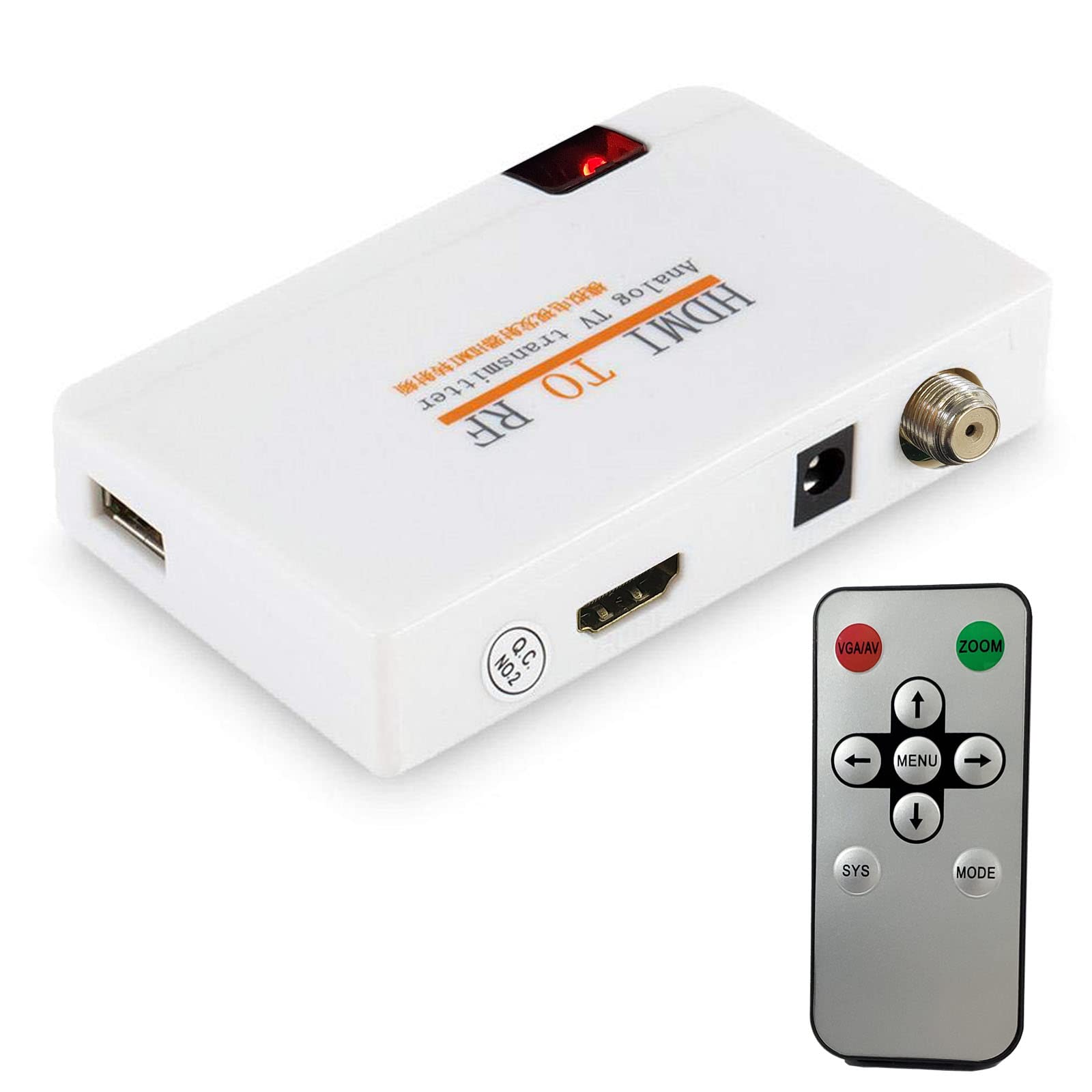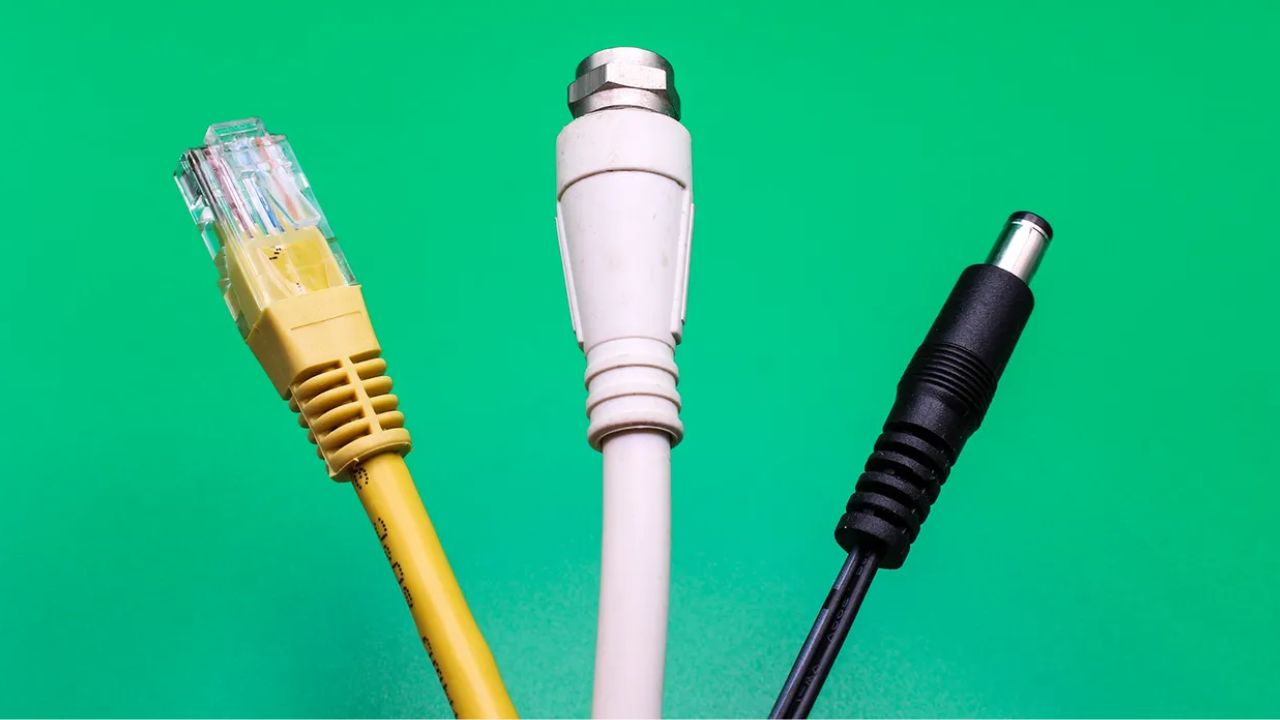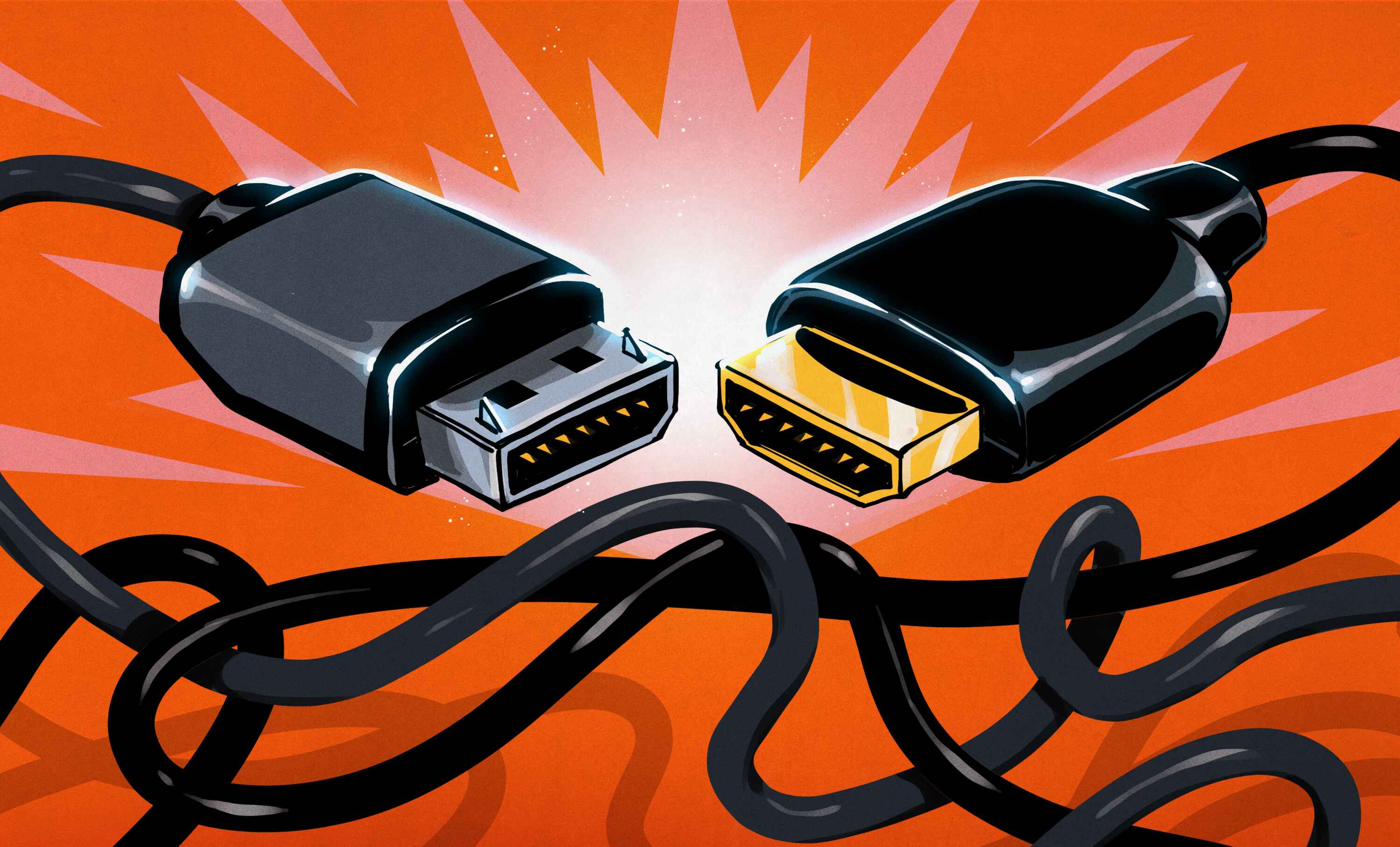Introduction
Welcome to our guide on how to convert coaxial cable to HDMI. With the evolution of technology, many households still have coaxial cable connections for their television sets. However, HDMI has become the standard for high-definition video and audio transmission. If you’re looking to upgrade your viewing experience by connecting your coaxial cable to an HDMI port, you’re in the right place.
Coaxial cable, or coax cable for short, has been widely used over the years to connect televisions, cable boxes, and other devices. It consists of a central conductor, a layer of insulation, a conductive shield, and an outer insulating jacket. On the other hand, HDMI (High-Definition Multimedia Interface) is a compact audio/video interface that allows for the seamless transmission of uncompressed video and audio in high-definition quality.
There are several reasons why you might want to convert coaxial cable to HDMI. HDMI provides better picture and sound quality, supports higher resolutions, and allows for easier connectivity to modern devices such as Blu-ray players, gaming consoles, and streaming devices. By converting your coaxial cable to HDMI, you can take full advantage of these benefits and enhance your home entertainment experience.
In this guide, we will walk you through the step-by-step process of converting coaxial cable to HDMI. We will explain the necessary equipment, provide an understanding of the coaxial cable connections and HDMI connections, guide you through the process of connecting the coaxial cable to an HDMI adapter, and offer troubleshooting tips in case you encounter any issues.
By the end, you will have the knowledge and skills to successfully convert your coaxial cable to HDMI and enjoy high-quality audio and video content on your modern television or display. Let’s get started!
What Is Coaxial Cable?
Coaxial cable, often referred to as coax cable, is a type of electrical cable that is commonly used for transmitting audio, video, and data signals. It consists of four main components: a central conductor, an insulating layer, a conductive shield, and an outer insulating jacket.
The central conductor is usually made of copper or copper-plated steel and carries the electrical signal. Surrounding the conductor is an insulating layer, typically made of plastic or foam, which helps to prevent interference and signal loss.
Next, there is a conductive shield, which is typically made of braided or foil-wrapped wire. This shield acts as a barrier to external electromagnetic interference, ensuring a cleaner and more stable signal transmission. The conductive shield is essential for maintaining signal integrity, especially in areas with high levels of interference, such as near electrical cables or electronic devices.
The outer insulating jacket provides protection for the internal components of the cable and is typically made of a durable material, such as PVC or Teflon. It acts as a barrier against physical damage and environmental factors.
Coaxial cable is commonly used in television systems, cable television distribution networks, and high-speed internet connections. It is known for its ability to transmit signals over long distances without significant loss or degradation.
Coaxial cable is also known for its compatibility with various devices and connectors. It uses standard connectors, such as the F-type connector, which is commonly used for cable television connections. Additionally, coaxial cable can be easily adapted to connect to other types of connectors, such as RCA connectors or BNC connectors.
Overall, coaxial cable is a reliable and versatile type of cable that has been widely used for many years. While HDMI has become the standard for high-definition audio and video transmission, coaxial cable still plays a crucial role in many households and industries. Understanding coaxial cable and its applications is essential when considering how to convert it to HDMI.
What Is HDMI?
HDMI, which stands for High-Definition Multimedia Interface, is a standardized audio/video interface that allows for the transmission of uncompressed digital video and audio signals. It has rapidly become the de facto standard for connecting various audio/video devices.
HDMI cables are capable of transmitting high-quality video and audio signals, supporting resolutions up to 4K Ultra HD and even higher. Unlike analog connections, HDMI delivers a pristine digital signal, resulting in sharper images, vibrant colors, and enhanced audio clarity.
One of the key advantages of HDMI is its ability to carry both video and audio signals over a single cable. This eliminates the need for multiple cables and simplifies the setup process. With HDMI, you can connect devices such as Blu-ray players, gaming consoles, set-top boxes, computers, and sound systems to your television or monitor quickly and easily.
HDMI also supports various advanced features, including 3D support, Ethernet connectivity, and Audio Return Channel (ARC). The ARC feature enables the transmission of audio signals from the television back to an AV receiver or soundbar, eliminating the need for additional audio cables.
There are different types of HDMI connectors and cables, including standard HDMI, mini HDMI, and micro HDMI. The choice of connector depends on the devices being connected and the available ports. HDMI cables also come in different versions, such as HDMI 1.4, HDMI 2.0, and HDMI 2.1, with each version offering different capabilities and features.
Overall, HDMI has revolutionized the way we connect and experience audio and video devices. It provides a convenient, high-quality, and versatile solution for connecting various devices and delivering immersive audio and stunning visuals. Converting coaxial cable to HDMI allows you to take advantage of these benefits and upgrade your viewing experience with ease.
Why Convert Coaxial Cable to HDMI?
There are several compelling reasons why you might want to convert your coaxial cable to HDMI. Here are some of the key benefits:
- Better picture and sound quality: HDMI provides superior audio and video quality compared to coaxial cable. It supports high-definition resolutions, such as 4K Ultra HD, which results in sharper images and enhanced color reproduction. Additionally, HDMI supports digital audio formats, ensuring pristine sound quality.
- Compatibility with modern devices: Many modern devices, such as Blu-ray players, gaming consoles, and streaming devices, are designed to connect via HDMI. By converting your coaxial cable to HDMI, you can easily connect these devices to your television or display without the need for additional adapters or converters.
- Easier connectivity: HDMI simplifies the connection process by using a single cable for both audio and video transmission. This eliminates the need for multiple cables, reducing clutter and making setup much easier and more convenient.
- Support for advanced features: HDMI supports various advanced features, such as 3D support and Ethernet connectivity. It also offers the Audio Return Channel (ARC), which allows audio signals to be sent from your television back to an AV receiver or soundbar using the same HDMI cable, eliminating the need for additional audio connections.
- Future-proofing: HDMI continues to evolve and improve with new versions, such as HDMI 2.1, which offer even higher resolutions, increased refresh rates, and enhanced features. By converting your coaxial cable to HDMI, you ensure that your setup is ready to take advantage of future advancements in audio and video technology.
Converting coaxial cable to HDMI allows you to unlock the full potential of your audio and video devices, enjoying the best possible picture and sound quality while streamlining your setup. Whether you’re a movie enthusiast, a gamer, or simply want to enhance your home entertainment experience, upgrading to HDMI is a worthwhile investment.
Now that we understand the benefits of converting coaxial cable to HDMI, let’s move on to the step-by-step process of making the conversion and enjoying all that HDMI has to offer.
Step 1: Gather the Necessary Equipment
Before you begin converting your coaxial cable to HDMI, it’s essential to gather all the necessary equipment. Here’s what you’ll need:
- HDMI to Coaxial Adapter: This adapter is the key component in the conversion process. It allows you to connect your coaxial cable to an HDMI port on your television or display. Ensure that the adapter is compatible with your specific coaxial cable and HDMI devices.
- Coaxial Cable: You will need the coaxial cable that is currently connected to your television or cable box. Make sure the cable is in good condition and has the appropriate connectors.
- HDMI Cable: You will need an HDMI cable to connect your HDMI to coaxial adapter to your television or display. Choose a high-quality HDMI cable that is long enough to reach from your adapter to your TV.
- Television or Display with HDMI Input: Ensure that your television or display has an available HDMI input. Most modern TVs have multiple HDMI ports, so check the back or side of your TV to locate the HDMI inputs.
- Power Supply (if required): Depending on the specific HDMI to coaxial adapter you’re using, you may need a power supply to ensure proper functionality. Check the adapter’s instructions to determine if a power supply is necessary and if it’s included or needs to be purchased separately.
- Optional: AV Receiver or Soundbar: If you plan to connect your television or display to an AV receiver or soundbar, make sure you have the necessary cables and equipment for that connection as well.
By gathering all the necessary equipment at the beginning, you can ensure a smooth and uninterrupted conversion process. Double-check that you have everything listed above before moving on to the next step.
Now that you have all the equipment ready, let’s proceed to the next step, where we will explore the different types of coaxial cable connections.
Step 2: Understand the Coaxial Cable Connections
Before you can convert your coaxial cable to HDMI, it’s crucial to understand the different coaxial cable connections. This knowledge will help you identify the specific coaxial connector types and ensure a proper and secure connection. Here are the most common coaxial cable connections:
- F-Type Connector: The F-type connector is the most widely used coaxial connector for television and cable connections. It has a threaded cylindrical design and is commonly found on cable boxes, televisions, and other devices. The F-type connector is easy to identify, with its male or female screw-on design.
- BNC Connector: BNC (Bayonet Neill–Concelman) connectors are commonly used in professional audio and video applications. They have a bayonet-style locking mechanism, which provides a secure and stable connection. BNC connectors are mostly found in specialized devices and equipment.
- RCA Connector: Although not technically a coaxial connector, the RCA (Radio Corporation of America) connector is often used for analog audio and video connections. It consists of three separate connectors—red for the right audio channel, white or black for the left audio channel, and yellow for the video signal. RCA connectors are commonly found on older televisions, VCRs, and DVD players.
When converting your coaxial cable to HDMI, you need to identify the specific coaxial connector type on your cable. In most cases, you will be dealing with the F-type connector. It’s important to verify the connector type on your cable and ensure that it matches the corresponding connector on the HDMI to coaxial adapter.
Take a close look at the connector on your coaxial cable. It will have a threaded metal pin in the center and a surrounding metal barrel. Make sure the connector is undamaged, clean, and securely attached to the cable. If you’re using an F-type connector, make sure the pin is centered and not bent.
Understanding the coaxial cable connections is an essential step in the conversion process. Now that you have a good understanding of coaxial connectors, we can move on to the next step and explore HDMI connections.
Step 3: Understand the HDMI Connections
As you embark on converting your coaxial cable to HDMI, it’s important to familiarize yourself with HDMI connections. Understanding the different types of HDMI connectors and their functionalities will enable you to make the right connections and ensure a successful conversion. Let’s explore the key aspects of HDMI connections:
- HDMI Type A: This is the standard HDMI connector. It is rectangular in shape with 19 pins and is commonly found on most TVs, monitors, and home theater systems. HDMI Type A connectors transmit both high-definition video and audio signals.
- HDMI Type C (Mini HDMI): The Mini HDMI connector is a smaller version of the standard HDMI connector. It is commonly used in portable devices such as cameras, camcorders, and some tablets. If you are connecting a device with a Mini HDMI output, you will need an HDMI Type A to Type C adapter or cable.
- HDMI Type D (Micro HDMI): The Micro HDMI connector is even smaller than the Mini HDMI connector. It is typically found on small portable devices such as smartphones and some tablets. If you are connecting a device with a Micro HDMI output, you will need an HDMI Type A to Type D adapter or cable.
- HDMI ARC (Audio Return Channel): Some HDMI ports on televisions and audio devices are labeled as ARC. This stands for Audio Return Channel and enables bidirectional audio transmission. With ARC, you can send audio signals from your television back to an AV receiver or soundbar through the HDMI cable, eliminating the need for separate audio connections.
When converting your coaxial cable to HDMI, you will most likely be using the standard HDMI Type A connector. You need to locate the HDMI input port on your television or display and ensure that it is compatible with the HDMI output port on the HDMI to coaxial adapter.
Inspect your television or display to find the HDMI input ports. They are often labeled as “HDMI” and may be numbered if there are multiple ports. Make a note of which HDMI port you will be using for the conversion process.
Understanding the different HDMI connections and their functionalities will help you make the correct connections and ensure a successful conversion from coaxial cable to HDMI. Now that you are familiar with HDMI connections, let’s move on to the next step, where we will connect the coaxial cable to the HDMI adapter.
Step 4: Connecting the Coaxial Cable to HDMI Adapter
Now that you have a good understanding of the coaxial and HDMI connections, it’s time to connect your coaxial cable to the HDMI adapter. Follow these steps to ensure a proper and secure connection:
- Turn off your television or display: Before making any connections, it’s best to turn off your television or display. This will help prevent any potential damage to the devices during the connection process.
- Locate the HDMI input port: Identify the HDMI input port on your television or display where you will connect the HDMI to coaxial adapter. Note the number or label of the port for future reference.
- Connect the HDMI cable to the adapter: Take one end of your HDMI cable and plug it into the HDMI output port on the HDMI to coaxial adapter. Ensure the connection is secure by gently pushing the cable into the port until it fits snugly.
- Connect the coaxial cable to the adapter: Grab your coaxial cable and carefully connect it to the coaxial input port on the HDMI adapter. If you have an F-type connector, twist it clockwise onto the threaded coaxial input port until it is securely attached. For other types of coaxial connectors, follow the specific instructions for properly connecting them.
- Optional: Connect the power supply: If your HDMI to coaxial adapter requires external power, connect the power supply to the adapter. Follow the manufacturer’s instructions to ensure proper power connection.
- Turn on your television or display: With all the connections securely in place, turn on your television or display and switch to the HDMI input corresponding to the connection you just made. Use your television remote or the display’s control panel to select the correct HDMI input source.
Once you have completed these steps, your coaxial cable will be connected to the HDMI adapter, which can then be connected to your television or display. Double-check all the connections and ensure they are secure to avoid any disruptions in the audio and video signals.
Now that you have successfully connected your coaxial cable to the HDMI adapter, it’s time to move on to the next step: testing the connection.
Step 5: Testing the Connection
After connecting your coaxial cable to the HDMI adapter and your television or display, it’s important to test the connection to ensure it is working correctly. Follow these steps to test the connection:
- Select the correct HDMI input: Using your television remote or the display’s control panel, navigate to the input source that corresponds to the HDMI port you connected the HDMI adapter to.
- Check for a stable signal: Look for any error messages or warnings on your television or display. If the signal is stable, you should see the content from your coaxial cable displayed correctly on the screen.
- Test audio and video quality: Play a video or TV show to check the audio and video quality. Pay attention to the picture clarity, color reproduction, and audio output. If the quality is satisfactory, it indicates that the connection is successful.
- Ensure both audio and video are functioning: Verify that both the audio and video signals are being transmitted properly. Listen for clear audio and watch for smooth video playback without any flickering or distortion.
- Test different channels or inputs: Change the channel or input source on your television or cable box to ensure that the connection is working for different TV channels or input devices. This will help confirm that the conversion from coaxial cable to HDMI is functioning correctly across different sources.
If you encounter any issues during the testing phase, double-check all the connections and make sure they are secure. Verify that the HDMI input source is correctly selected on your television or display. Additionally, ensure that your coaxial cable is working properly and that your HDMI to coaxial adapter is compatible with your specific devices.
By testing the connection, you can ensure that the conversion from coaxial cable to HDMI is successful and that you are experiencing the improved audio and video quality that HDMI offers.
Now that you have tested the connection and confirmed its functionality, let’s move on to the next step, where we will discuss troubleshooting common issues.
Step 6: Troubleshooting Common Issues
During the conversion process from coaxial cable to HDMI, you may encounter some common issues. Here are some troubleshooting tips to help you address these issues:
- No signal or blank screen: If you see no signal or a blank screen after connecting your coaxial cable to the HDMI adapter, ensure that the HDMI input on your television or display is correctly selected. Double-check the HDMI connections and make sure they are secure. Try unplugging and reconnecting the HDMI cable and the coaxial cable to ensure a proper connection.
- Poor audio or video quality: If you experience poor audio or video quality, first check that your coaxial cable and HDMI cable are in good condition and properly connected. Make sure the cables are not damaged or frayed. Check the settings on your television or display to ensure that the audio and video settings are optimized for the HDMI input. If necessary, consult the user manual for your television or display for guidance on adjusting the settings.
- Audio but no video (or vice versa): If you have audio but no video (or vice versa), double-check that the HDMI input on your television or display is correctly selected. Confirm that the HDMI cable and coaxial cable connections are secure. Test the connection with a different HDMI cable or HDMI input on your television to rule out any cable or port-related issues.
- Compatibility issues: Ensure that your HDMI to coaxial adapter is compatible with your specific devices and cables. Verify that the adapter supports the resolution and audio formats you require. Consult the product documentation or the manufacturer’s website for compatibility details. If you discover compatibility issues, you may need to consider an alternative adapter or seek further assistance from the manufacturer.
- Power issues: If your HDMI to coaxial adapter requires external power, make sure that the power supply is connected correctly. Ensure that the power source is functioning, and check for any LED indicators on the adapter to confirm power connectivity.
If you have attempted these troubleshooting steps and are still experiencing issues, consult the user manual for your HDMI to coaxial adapter or contact the manufacturer’s support team for further assistance. They will be able to provide specific guidance and solutions based on the device you are using.
Troubleshooting common issues ensures that you can overcome any challenges that may arise during the conversion process from coaxial cable to HDMI. By following these tips, you can enhance your audio and video experience and enjoy the benefits of HDMI technology.
Now that you are equipped with troubleshooting knowledge, you have completed the essential steps to convert your coaxial cable to HDMI. Congratulations! You are now ready to enjoy the improved audio and video quality provided by HDMI.
Conclusion
Converting your coaxial cable to HDMI opens up a world of possibilities for enhancing your audio and video experience. HDMI provides superior picture and sound quality, compatibility with modern devices, and easier connectivity, making it the standard for high-definition multimedia transmission.
Throughout this guide, we have walked you through the step-by-step process of converting coaxial cable to HDMI. We began by understanding the coaxial cable connections and HDMI connections, ensuring a clear understanding of the different connector types and their functionalities. We then covered the necessary equipment, including the HDMI to coaxial adapter, coaxial cable, HDMI cable, and other optional accessories.
Next, we guided you through connecting the coaxial cable to the HDMI adapter, ensuring secure and proper connections. We emphasized the importance of testing the connection to verify its functionality, checking for audio and video quality and stability. Additionally, we discussed troubleshooting common issues that may arise during the conversion process.
By following these steps and troubleshooting tips, you can successfully convert your coaxial cable to HDMI and enjoy the benefits of superior audio and video quality. Upgrade your home entertainment system and unlock the full potential of your devices by taking advantage of HDMI technology.
Remember, if you encounter any difficulties during the conversion process, consult the user manuals for your devices or contact the manufacturer’s support team for further assistance. They will be able to provide personalized guidance based on your specific equipment.
Thank you for joining us on this journey to convert coaxial cable to HDMI. We hope this guide has been helpful in equipping you with the knowledge and skills to enhance your audio and video experience. Now, sit back, relax, and enjoy your favorite content in stunning high-definition with HDMI!







